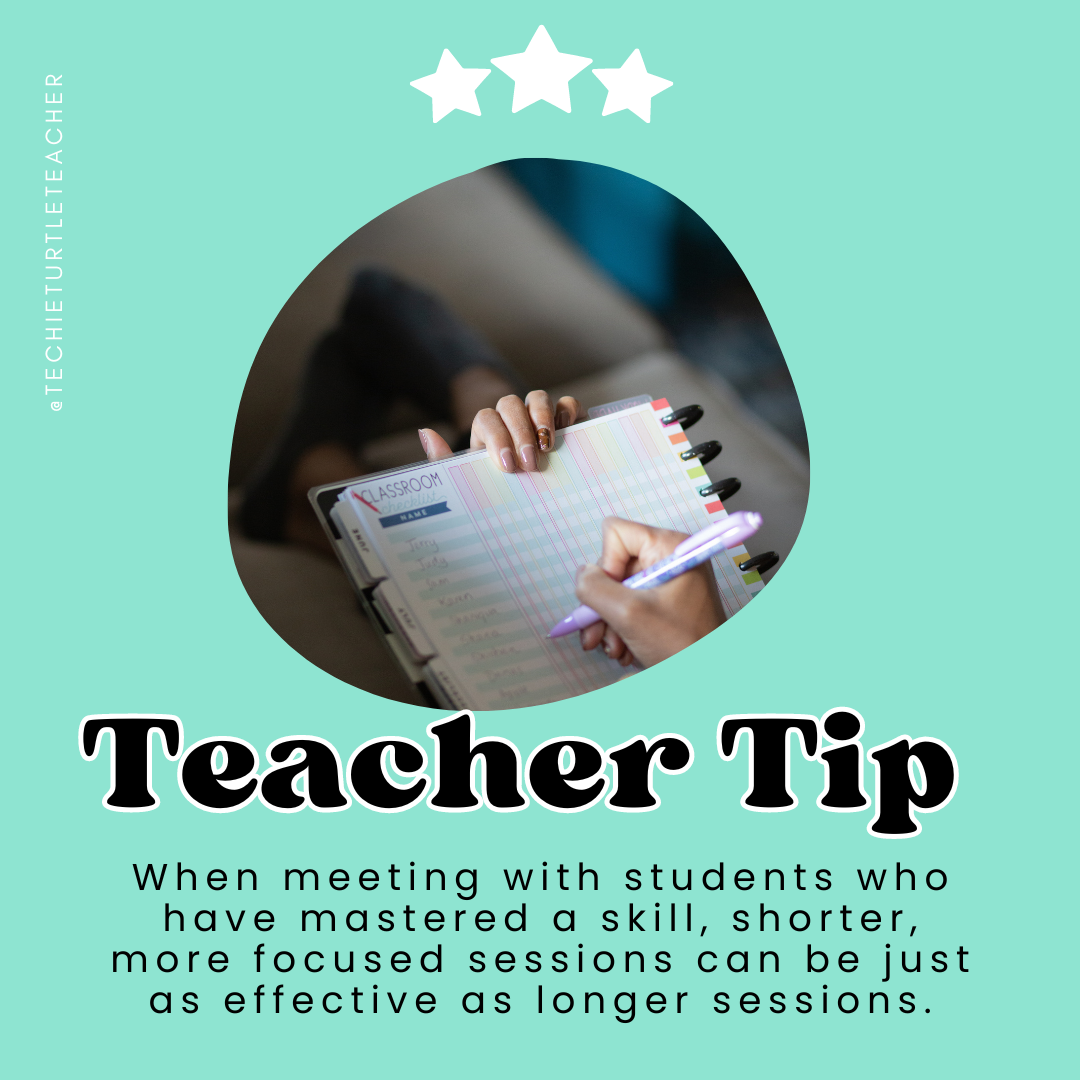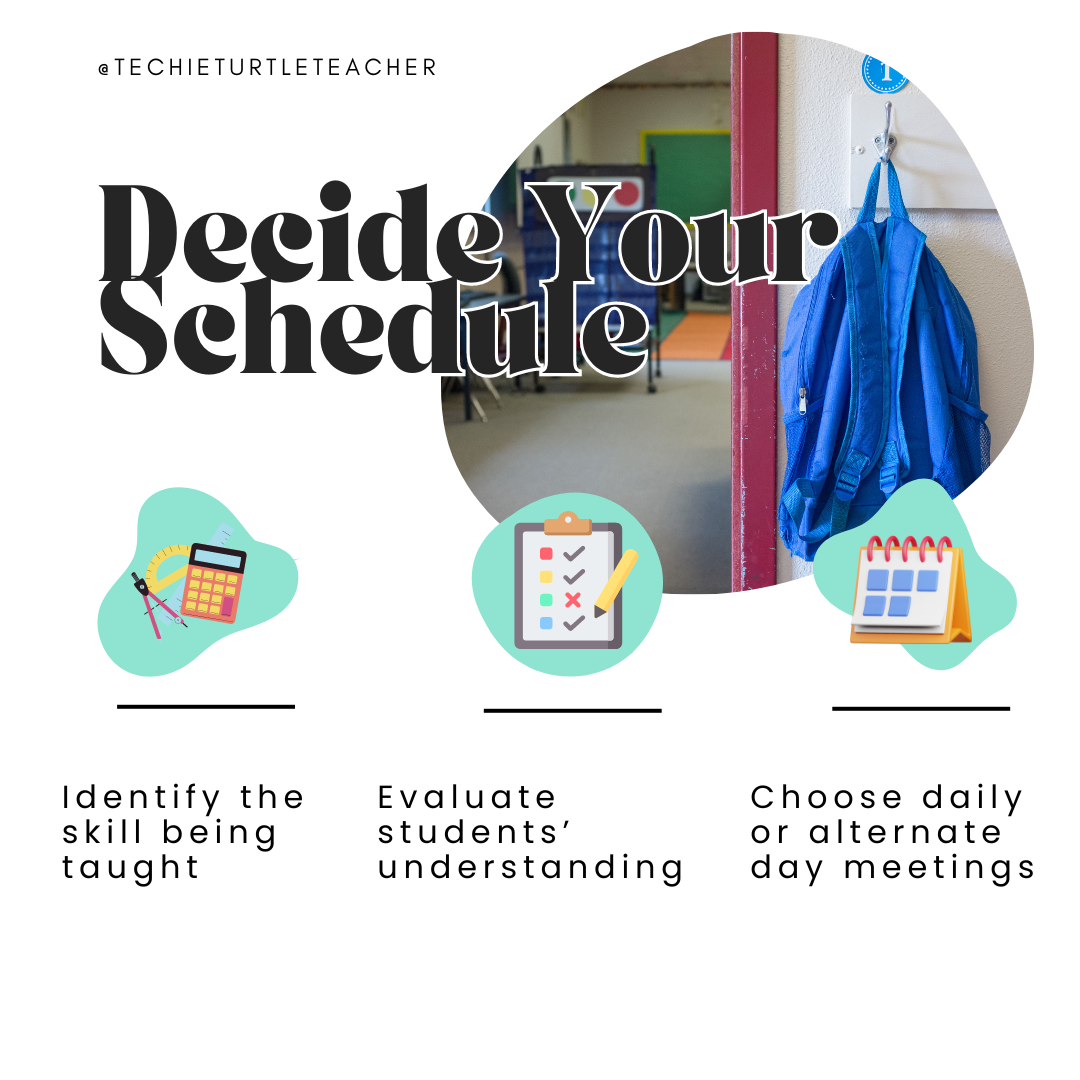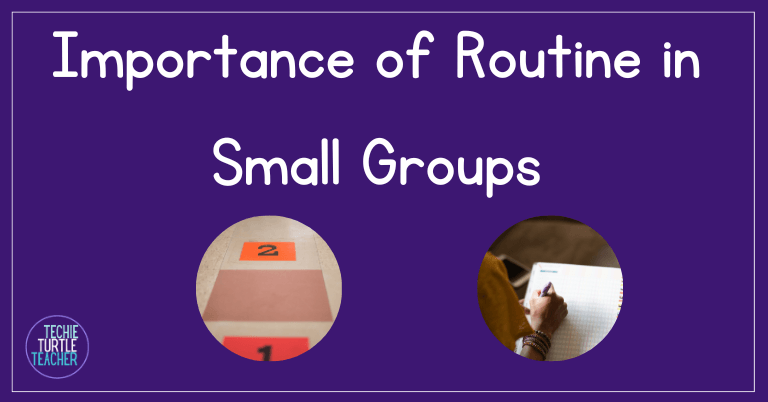
You may feel like you have to meet with every group every single day, and the weight of that pressure can be overwhelming.
The thought of fitting in all those group meetings while trying to cover essential skills like place value, telling time, and addition can leave you feeling stretched thin and unsure of how to make it all work.
You’re not alone—many teachers struggle with finding the right small group math instruction schedule that meets their students’ needs without burning themselves out.
But what if there was a way to bring balance and confidence to your small group math instruction schedule, without the daily stress of trying to meet with every single group?
Tailoring Your Small Group Math Instruction Schedule to Fit Your Students' Needs
The beauty of small group instruction is its flexibility.
You have the freedom to tailor your schedule based on the needs of your students and the specific skills you’re teaching.
For instance, if you’re working on something that requires intensive practice, like subtraction with regrouping, it might make sense to meet with a group every day.
However, if you’re focusing on a skill that your students have already grasped, such as counting by tens or recognizing coin values, you might not need to meet with them as frequently.
You can meet with each group every day, but you don’t necessarily have to, depending on the topic or skill you are teaching.
Of course, you will need to see if your school or district has any policies on meeting with your groups every day and follow those guidelines.
But if there are no guidelines, feel free to take my advice!

Making the Most of Your Small Group Math Instruction: Prioritizing Time and Student Needs
The key is to be intentional with your time and your students’ time.
Meeting with every group daily might sound ideal, but in reality, it can lead to burnout for you and overwhelm for your students.
You definitely want to make sure you meet with each group at least every other day.
Don’t just send one group to work independently all week.
You need to provide direct instruction, even if it is a short amount of time.
Consider a scenario where you’re teaching addition facts to a group of first graders.
Meeting with them briefly every other day to reinforce strategies and check for understanding can be more effective than a longer, less frequent session.
On the other hand, when working on a topic like telling time, you might find that meeting every day for a short period helps solidify the concept.
If you have struggling students, you need to meet with that group every day.
These students require consistent support to help them catch up and build confidence.
For example, if you have a group of students who are struggling with place value, daily sessions can allow you to break down the concept into smaller, more manageable parts, ensuring they grasp each step before moving on.
This consistent, targeted instruction can make a significant difference in their understanding and retention.
If you decide not to meet with some of your higher-level students every day, you can split your struggling students into smaller groups to give those students more of your time.
For instance, while your higher-level students work independently on a challenging math puzzle or a money counting activity, you can focus on a smaller group that needs extra help with subtraction or skip counting.
This approach allows you to provide more personalized instruction where it’s most needed.

Balancing Flexibility with Routine: Creating a Consistent and Supportive Small Group Math Schedule
Do what works best for you and your students, but try to be somewhat consistent with your groups for the sake of routine.
Routines provide structure, helping students know what to expect and when.
When students know they will meet with you regularly, it gives them a sense of security and helps them stay engaged.
For example, if your students know they’ll meet with you to review subtraction on Tuesdays and Thursdays, they can come prepared with questions or challenges they encountered during independent practice.
This predictability can boost their confidence and foster a more productive learning environment.
Ultimately, the goal is to find a balance that supports your students’ learning while maintaining your sanity.
Small group instruction should be a tool that works for you, not a source of stress.
By being strategic about when and how often you meet with your groups, you can maximize your effectiveness as a teacher and ensure that all your students get the attention they need.

Grab Small Groups Activity Guide
Pin this to Pinterest for later




